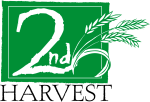Second Harvest distributes more than 2 million pounds of donated food each month to help people in need in its service region – the Inland Northwest. Partnerships with more than 250 neighborhood food banks and meal centers make it possible for Second Harvest to feed 50,000 people each week. Through its diverse network of food assistance programs, Second Harvest distributed nearly 24 million pounds of food spanning a 51,000 square mile radius.
Current Activities 
Under its umbrella of food distribution, Second Harvest implements a wide array of programs geared towards increasing food accessibility to specific clientele.
Mobile Food Bank: Second Harvest utilizes a 10-compartment, refrigerated truck to deliver product to MFB locations. Volunteers help distribute the food to hundreds of families and seniors who would otherwise be unable to afford many of the nutritious items. Mobile food banking will be a key strategy for getting food to where it’s needed most for the foreseeable future.
Plant a Row for the Hungry: Plant a Row for the Hungry (PAR) is a people-helping-people initiative to assist in feeding hungry members of our community. PAR encourages community members to dedicate a row (or more) of fruit and vegetables in their garden to help feed those in need. The program thrives off of community engagement. PAR is a national program spearheaded by the Garden Writers Association, a non-profit association which provides leadership and opportunities for education, recognition, career development, and a forum for diverse interactions for professionals in the field of garden communication. Second Harvest’s PAR initiative was the highest-yielding program of its kind in the entire country in 2011. The tremendously-successful program brought in 286,000 pounds of fresh produce to help feed those in need.
Gleaning Project: In 2012, a gleaning program was established,focusing on capturing surplus produce from farmers’ fields and residential fruit trees throughout the Spokane area. Volunteers are mobilized to donor sites where they harvest excess produce that then goes to feeding hungry people via Second Harvest’s network of food bank and meal centers.
Food $ense: This winning recipe for fighting hunger includes classes that teach low-income families and seniors how to eat healthy meals on a shoestring budget to make the most of emergency food supplies. Food $ense is a collaboration between Second Harvest and Washington State University Extension, where Second Harvest supplies the food and WSU Extension provides the education.
Kid’s Café: This program provides hearty and healthy afternoon snacks for hundreds of low-income children. The Northeast Youth Center and West Central Community Center both serve neighborhoods with a high density of low-income families. Communities in Schools offers afterschool programs at Cheney Middle School, where 44 percent of students received free or reduced-price breakfast and lunch last year. There are also programs in Spokane Valley and Tri-Cities.
Backpack Program Aims to reduce the negative impact that inadequate nutrition has on the health and well-being of children by providing take-home food for the weekend.
School Pantry This program focuses on childhood hunger through the provision of food to children and their families at school. School pantries are located on the grounds of a school intended to provide a more readily accessible source of food assistance to low-income students and their families.
TEFAP (The Emergency Food Assistance Program): A federal program that helps supplement the diets of low-income needy persons, including elderly people, by providing them with emergency food and nutrition assistance.
EFAP (Emergency Food Assistance Program): Assists local organizations and tribes in providing food to low-income, vulnerable individuals.
CSFP (Commodities Supplemental Food Program): Provides a safety net for children over age five who no longer qualify for the USDA’s Women, Infants and Children (WIC) but are too young to enroll in school where they would be eligible to receive free or reduced meals. The program also serves low-income seniors over age 60.
Brown Bag Once a month, brown paper grocery bags are packed with groceries from Second Harvest. Volunteers from Catholic Charities assist in the delivery of groceries to those in need.


